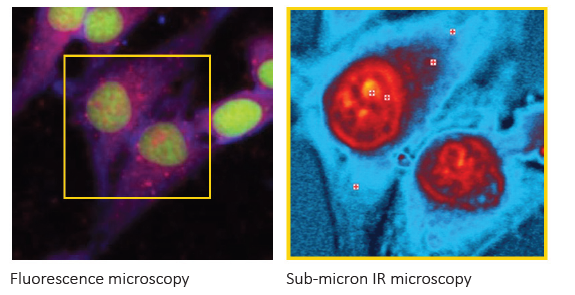
Advances in life sciences research and technologies are transforming health around the globe and have the potential to provide innovative, new and improved ways to support a healthier worldwide population.
These advances drive increasing government and private investments into life science studies and subsequently drive researchers to supplement their existing analytical and scientific research equipment with new, novel techniques, models, and algorithms to support these scientific breakthroughs. The life sciences comprise fields of science involving the study of living organisms such as plants, animals, and humans. Fundamental to supporting many of these new discoveries is understanding the chemical molecular structure of cellular and bio-molecular components and processes.
Many techniques exist to investigate these molecular processes and chemical structures. Fluorescence microscopy is an example of a critical technique central to life science research, providing high molecular specificity in a broad range of application areas. However, fluorescence is limited in its ability to provide chemical molecular structure.
Infrared (IR) and Raman spectroscopy and imaging systems, are well established techniques in life science research, providing broad macromolecular, spatially resolved characterization capabilities that have been applied to a host of application areas including studying the biochemical environment of single cells or monitoring the reaction of cells to drugs, and for use in the pharmaceutical industry for process and quality control in the manufacturing of drugs.
However, conventional IR is limited in its spatial resolution for life science and Raman microscopy is limited in its use with fluorescence microscopy due to fluorescence interference issues. A novel new approach, Optical Photothermal Infrared (O-PTIR) spectroscopy, has overcome many of the fundamental limitations of conventional IR for life science applications, while also providing excellent complementarity with Raman spectroscopy and a fully integrated approach with fluorescence microscopy.
This application note describes the novel O-PTIR approach and its integration with Raman and fluorescence techniques for life science applications and highlights a range of high value life science applications.

Learn More?
Please click on ‘Request Application Note’ and download the application note ‘Life science applications of sub-500nm IR microscopy and spectroscopy with co-located fluorescence imaging’.
